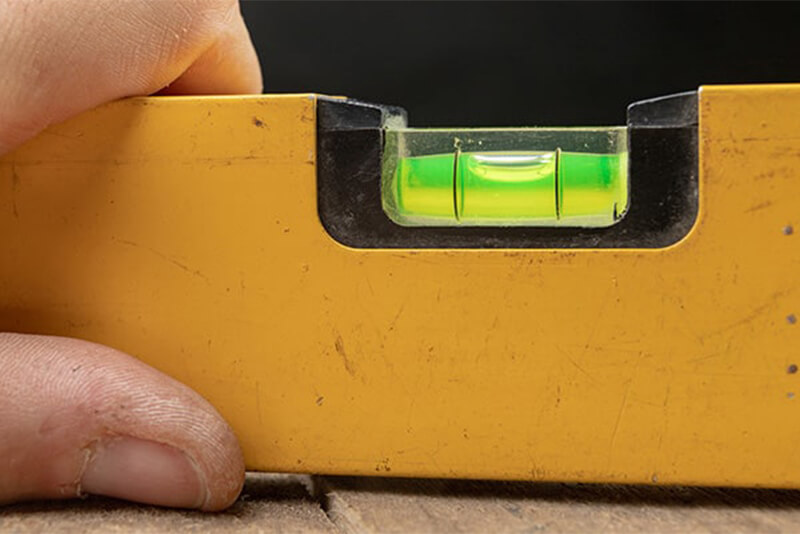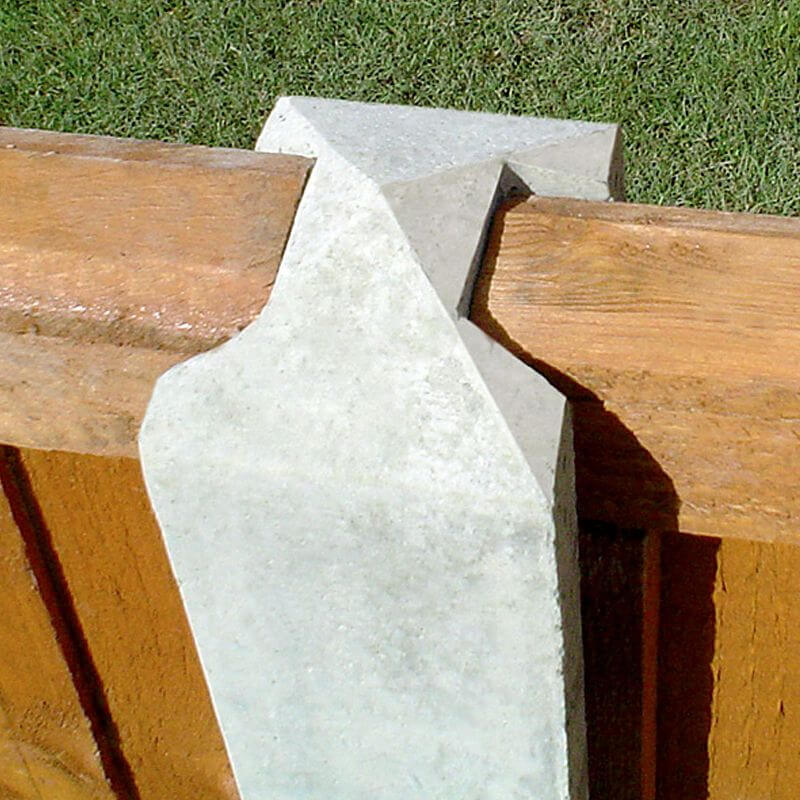![How to Dig a Fence Post Hole: Tools & Expert Tips [UPDATED]](https://www.buyfencingdirect.co.uk/media/magefan_blog/fence-post-concrete-cut-out-min.jpg)
When it is time to dig a fence post hole, you are not just preparing for a new fence; you are laying the groundwork for a key part of your garden's layout. This focuses on precision and the right approach, ensuring each post hole is a stepping stone to a sturdy, stylish boundary.
From selecting the perfect spot to choosing the ideal depth, every step is crucial in this process. Armed with the best tools and techniques, you are about to embark on a journey that transforms your garden's appearance and functionality.


Editor’s Note [08.07.2024]:
Our article about how to dig a fence post hole was originally published on April 17, 2014. A variety of amendments have been made to the existing content. In addition, we have added the following sections - an introduction to fence post hole digging, plan and mark your fence layout, safety tips and best practices, related article, and a conclusion. There has also been a sizable increase in the choosing the right tools for digging post holes section.
Introduction to Fence Post Hole Digging
Digging a post hole, sounds deceptively easy, but it is so much more than “just shovelling dirt”. A successful outcome partially depends on the planning. Always be precise and think like a professional, you need to carefully plan where your fence will stand and then dig the hole accordingly.
Before you begin digging you will need both a spade and post hole digger to start breaking ground. Ensure that each hole you dig is deep enough to securely anchor each post firmly in place. With similarities to the roots of a tree, the posts will hold the fencing firm even in the strongest of winds and adverse weather conditions. The effort will be well worthwhile as the holes will be the foundation to your fence.
Choosing the Right Tool for Digging Post Holes
Below is a list of tools that will be ideal when you dig a fence post hole:
- Fence post hole digger - this is more than an average spade. This is a premier league tool for digging post holes and makes a massive difference
- Spade – you will certainly need a spade for digging, even if the workload is shared with a fence post hole digger
- Trowel - for a smooth, neat finish with concrete, a trowel is a perfect tool
Additional supplies
Additional supplies which will be valuable when digging a hole are spray paint (or marking flags).
Other tools, which you will need for subsequent phases of fence post installation are:
- Chisel – spot on for intricate and fiddly areas where precision is needed
- Drill - a natural tool for securing items to your posts and drilling pilot holes
- Hammer – this is a must-have for all banging jobs! A claw hammer adds a little extra value in terms of pulling power
- Post level - these make sure your fence post stands up straight and proud
- Saw – these are ideal for trimming posts down to size
- Screwdriver - a handy alternative to full drill mode, which also saves a bit of time and effort
- Spirit level - keeps everything on the level as you want posts to be straight
- String line - line up a post perfectly with a string line


Other equipment you will need after digging a post hole are a bucket, paintbrush or roller, rake, tape measure and wheelbarrow.
Additional supplies you will need after digging a post hole are concrete mix, gravel boards, nails or screws, paint, or stain (optional), post caps, rubble bags, timber for bracing, and a water source (hose or bucket).
Step-by-step guide: how to dig a fence post hole:
Read our guide to installation, about “How to dig a fence post hole” which is broken down into convenient steps. We believe this process is the best way to dig a hole for a post:


Plan and mark your fence layout
Plan for success by identifying where exactly your fence will be placed. Carefully, map out the coordinates where each fence post will be placed using spray paint or flags. Now take your tape measure and precisely measure the locations of each post. It is worth rechecking your measurements as problems originating from incorrect spacing will be difficult to fix later.
Gathering equipment, tools, and supplies
Gather the various items needed as identified above. You can find at all big house and garden suppliers a tool named a post hole digger. Use one of these as well as a spade for different facets of fence post hole digging. Cost-wise these are great value at £30-£40 and save much time and effort, however a few things will need to be considered before digging.
Checking the ground
The first consideration is, will there be any pipelines or cables under the soil which will cause further damage if struck? Make sure you know the ground layer and stay well clear of piping.
The second consideration is what type of ground will you be digging. Hard stoney ground will cause issues when digging as well as soft clay layers. It is best to dig a part hole and pour water in to work and weaken the soil if you reach a tough part of the ground.
Start digging!
Press your post hole digger into the ground and move it around a little, then release the claws to take out dirt. Continue doing this until you reach a deep level. Frequently, you will come across roots and other hard items. Work the dirt with the bladed edges to enable deeper ground penetration.
If you are unsure on how deep you are, a great rule of thumb when posting fence posts is that at least one-third of the post should be underground. This will provide adequate support to keep the post upright. Therefore, placing the pole in and out until 1/3rd or 4 feet is dug. Whip out your tape measure again and check the hole depth and width of your hole. Consistency is key here, especially if you want a straight fence line.
Anchoring the Fence posts
Pouring concrete mix into the hole to keep the post stable is a common practice. Follow the correct concrete instructions, avoid a quick job as it will have minimal effect on the post. We advise using the least amount of water to set off the concretes chemical reaction as this will make it extremely hard and have the best effect on your fence posts.
Get someone to hold the post once you have checked using a spirit level that is the correct gradient, then pour in the concrete mix. Hold the post until the mix is semi set, then use left over soil to cover the layer to reapply the natural look. Smooth out the bottom of the hole, a trowel is handy for this. You want a flat base for your post to sit on.
Following this method is the most effective choice to undertake for your fence posts. Other methods will work but nothing comes close to the stability this method will ensure.


Anchoring the Fence posts
Pouring concrete mix into the hole to keep the post stable is a common practice. Follow the correct concrete instructions, avoid a quick job as it will have minimal effect on the post. We advise using the least amount of water to set off the concretes chemical reaction as this will make it extremely hard and have the best effect on your fence posts.
Get someone to hold the post once you have checked using a spirit level that is the correct gradient, then pour in the concrete mix. Hold the post until the mix is semi set, then use left over soil to cover the layer to reapply the natural look. Smooth out the bottom of the hole, a trowel is handy for this. You want a flat base for your post to sit on.
Following this method is the most effective choice to undertake for your fence posts. Other methods will work but nothing comes close to the stability this method will ensure.
Safety Tips and Best Practices
Think about your health and safety while you dig the hole for a fence post. To lighten the load, we advise you get a friend to help. Remove any debris to make the installation proceed more smoothly and to remove any trip hazards. Verify that there are no underground utilities, such as gas, water, or sewage lines, in the area you are working in.
If you have access to good protective equipment, including protective gloves and sturdy boots, you will be safer. Keep your back straight and rise with your knees to maintain proper posture.
The best conditions for digging post holes are bright, clear days; however, do not forget to drink plenty of water and take frequent rests. If everything gets to be too much, try not to let pride get in the way. Hire a professional (if you have the funds) or ask a friend to help you with the task.
Related article
We strongly recommend you to read how to install a fence post into concrete. This contains much related information when you are about to dig a fence post hole.
Buying fence posts from Buy Fencing Direct
If you are looking to buy top-quality fence posts, look no further than Buy Fencing Direct. We have an extensive selection of fence posts available, all at competitive prices, which are available at this link.
Conclusion: The Best Way to Dig a Post Hole
So, in conclusion we would always recommend adopting a professional approach when you dig a fence post hole. We believe we have provided the best way to dig a hole for a post in our step-by-step approach. It is more than just "digging a hole", you need to calculate where you want the fencing, select a spot, and precisely measure before digging post holes.
We have summarised all the tools you will need, with the fence post hole digger being the premium tool for digging post holes and a spade and trowel also being important. Mark and plan your fencing run with markers or spray paint. Check for underground pipelines or cables before commencing work.
We recommend concrete for anchoring your fence post and adopting our safe practices during the dig. Consistently check the depth and width for each hole as they will lead to a professional, uniform, and aesthetically pleasing fencing run.


Contact Information
We appreciate you may have queries about fence post hole digging including fence post depth and tools to use. The Buy Fencing Direct team is available at 0333 003 0515 and are available with help and support.
Receive guidance about tools needed, the hole depth and other factors. Speak to our friendly team today about our fencing panels, posts, and supplies, we will help you in whatever ways we can.
Also contact Buy Fencing Direct in these other ways:
- Emails - send these through our contact page
- Live chat - real-time support is available using live text chat




